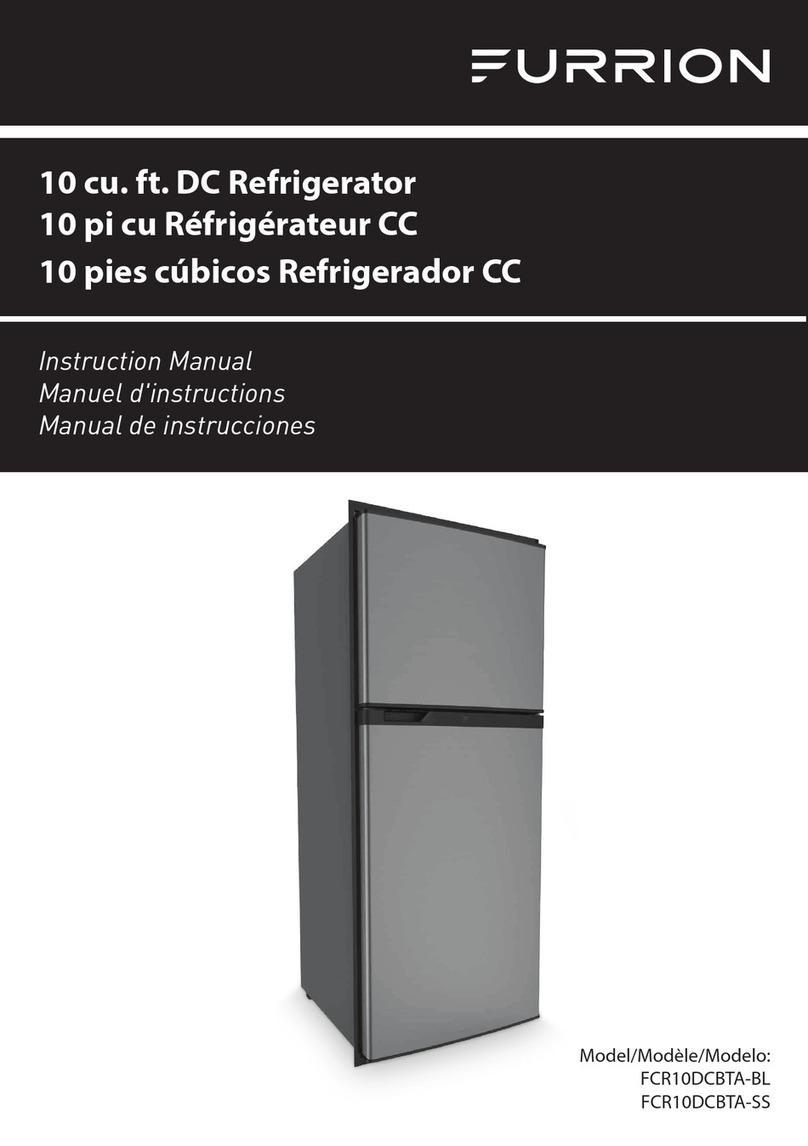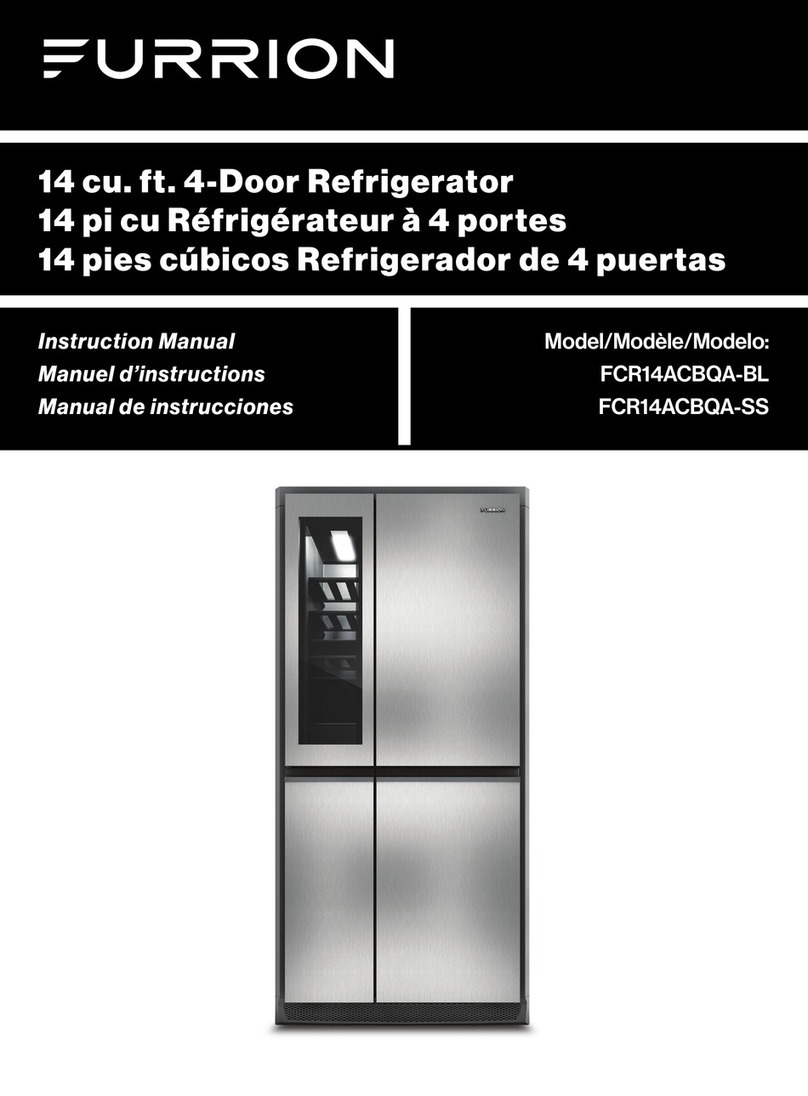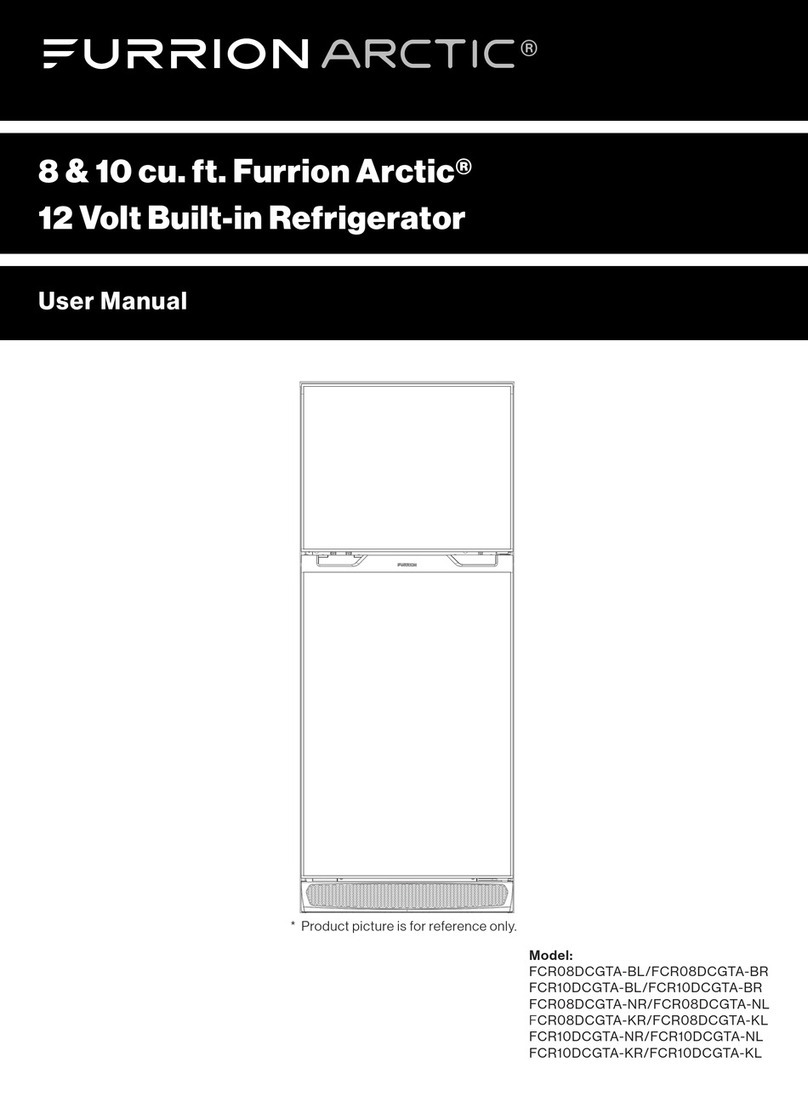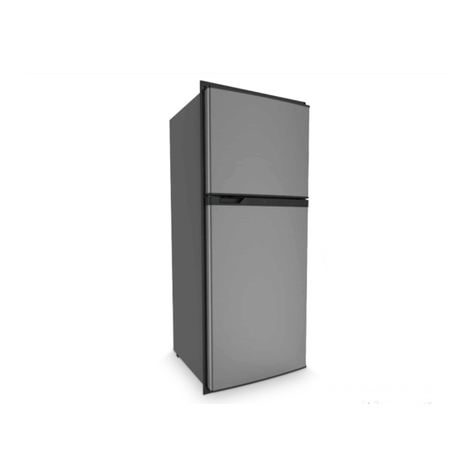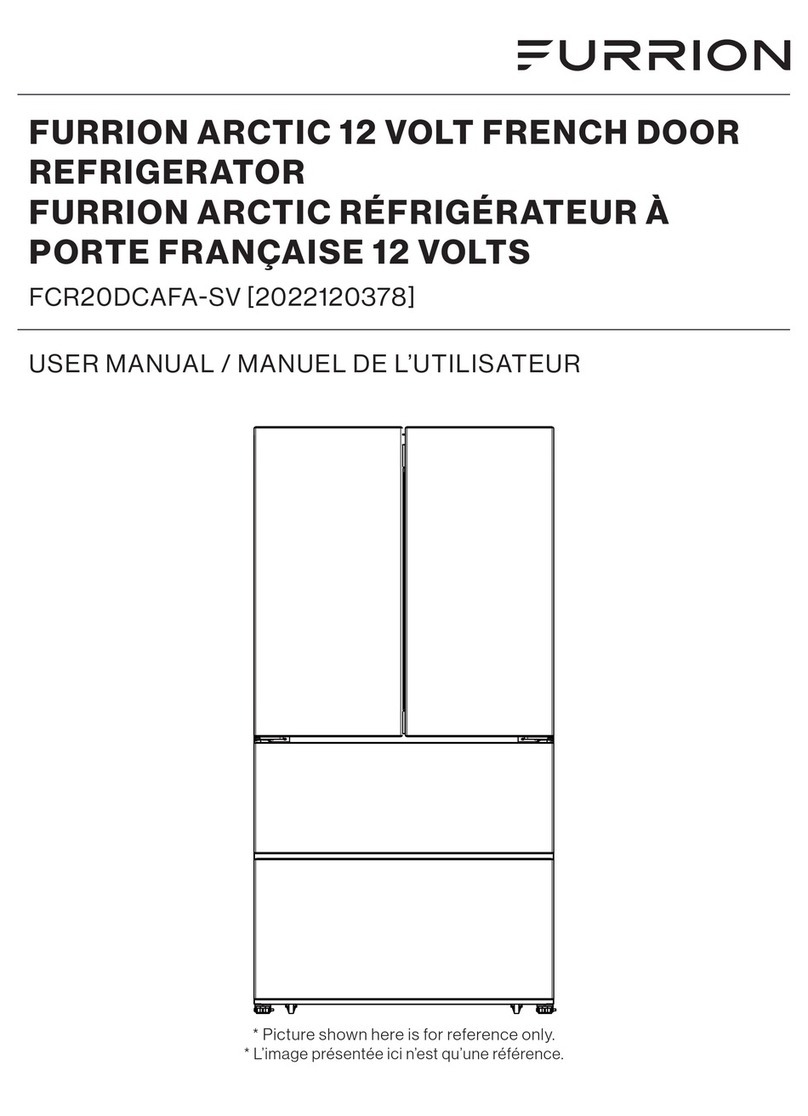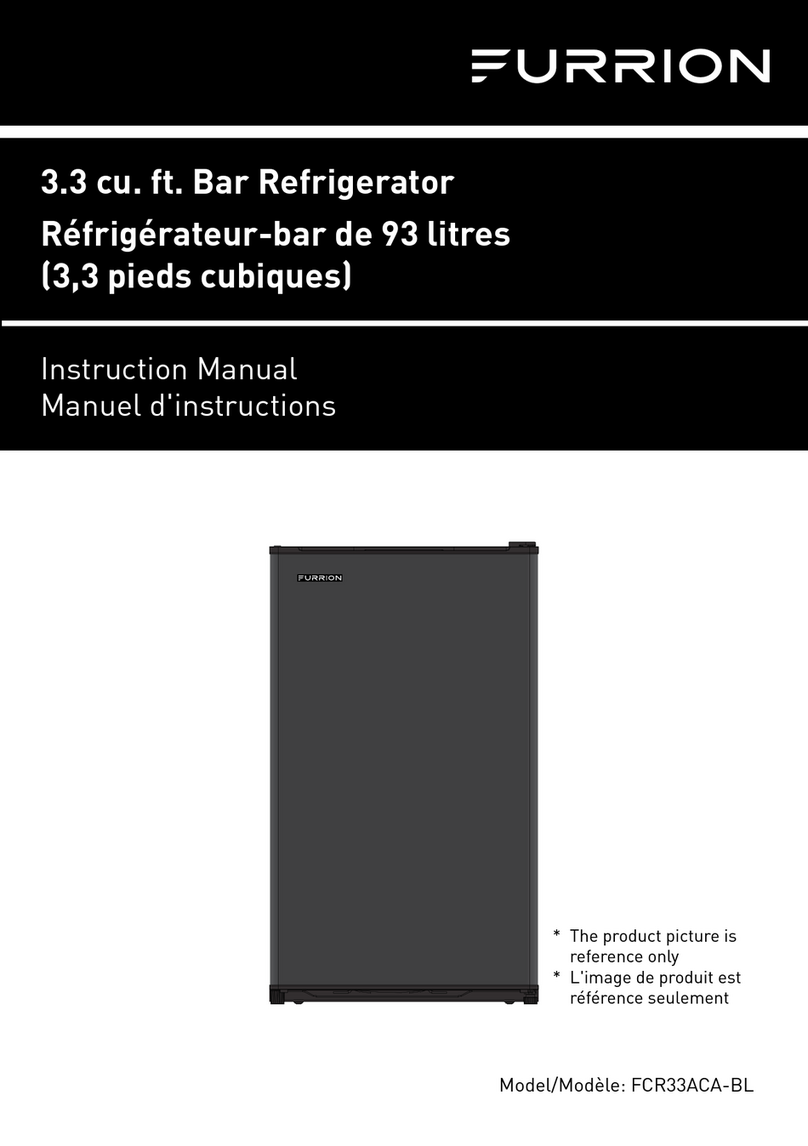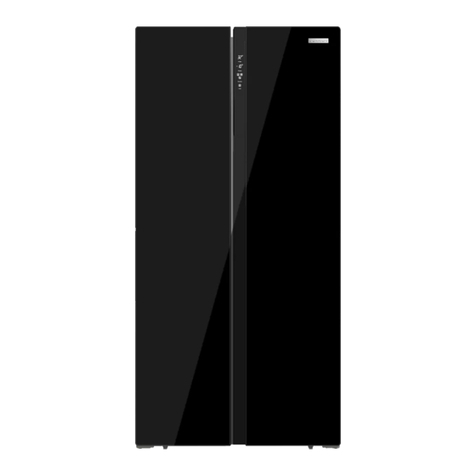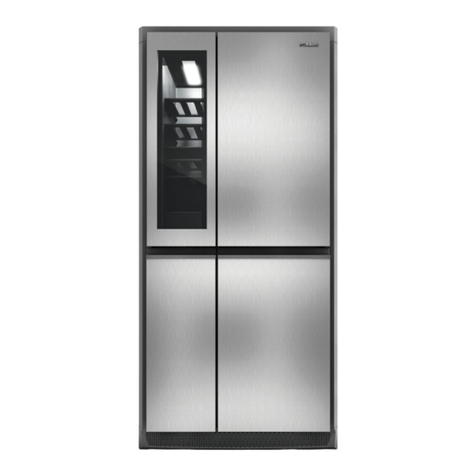
CCD-0007862 Rev: 05-16-23 - 9 -
Temperature Mode Selection (°C /°F)
Default is°F, when the unit is powered on the first time.
To change to°C, press and hold the MODE button for 5
seconds. To change back to°F, press and hold the MODE
button again.Temperature adjustment range:
–Fridge compartment: +32 to +43°F(0 to 6°F)
–Freezer compartment: -10 to +5°F(-23 to -15°C)
Lock/Unlock
●This refrigerator is able to lock the control panel to stop
accidental operation.
●All buttons are locked if you press the Lock/Unlock
button.
●The lock icon is illuminated when the control panel is
locked.
●Hold the Lock/Unlock button for 3 seconds to Unlock.
And the lock icon is no longer displayed.
Setting the Temperature Control
●Your unit has one control for regulating the temperature.
The temperature control is located on the left side edge
of the right refrigerator compartment door.
●The first time you turn the unit on, run for at least 4
hours before placing food inside. This will ensure that
the freezer compartment is thoroughly chilled and the
refrigerator compartment is stabilized before food is
placed inside. Then adjust the temperature setting to
your desired setting.
●To adjust the temperature in each zone, press the
appropriate zone button, and the selected zone will flash
on and off. The temperature will change according to the
pre-set temperatures as shown below. You will hear a bell
chime with each press of the control panel buttons.
Super Freezer Mode
When the Super Freezer Mode is selected, the compressor
will operate continuously to freeze foods faster, and keep
them fresh. The super freezer mode will automatically turn off
either after 24 hours of operation or when the freezer sensor
reaches -10°F( -23°C). The super freezer icon will turn off, and
the freezer will continue to operate at the last temperature
setting you have set before.
Super Fridge Mode
When the super fridge mode is selected, the fridge
compartment reaches the set temperature in the shortest
period, in order to keep the food as fresh as possible. In this
mode, the set temperature of the fridge compartment locks
on 32°F(0°C).
The program runs 150mins then exits automatically, the super
fridge icon goes out,which means the super fridge function
is disabled, the temperature setting returns to the last one
before the super fridge mode operates.
Off Grid Vacation Mode (Holiday Mode)
In this mode, the refrigerator runs at 43°F (6°C) and the
freezer runs at 5°F(-15°C).
Setting this mode can help conserve energy after
disconnecting from shore power, and using only DC12V
power source and solar power sources. Limit the frequency
of door openings, and length of time open. Sensitive foods
should be consumed more quickly, and stored toward the
rear of the fridge to maintain freshness.
To optimize DC12V power source runtime performance:
●Ensure the refrigerator and food stored is down to desired
temperature before disconnecting shore power.
●Avoid adding significant amounts of warm items,
especially beverages, at one time unless already cooled.
●Adding new items is best in the morning to utilize
solar power (if available) during the day to bring the
temperature back down without consuming DC12V power
source capacity.
ON/OFF
●Long press “MODE” and “LOCK” buttons at same time for
5 seconds to turn the refrigerator’s LOW POWER mode .
●Temperature displays illuminates with “--” after Low
power mode is on.
●Cavity lights will turn off after 3 minutes of the door being
open.
●Long press “MODE” and “LOCK” buttons at same time
for 5 seconds to turn off low power mode.
NOTE:
●If the appliance lost power, or it is turned off, it will need to
wait 3 to 5 minutes to restart.
Open Door Alarm
When the refrigerator door is open for more than 1 min, the
buzzer will alarm to remind users to close the door. After the
door is closed, the alarm sound will stop automatically.
Fridge Compartment Switch Off/On
Long press “FRIDGE” button for 5 seconds to turn off the
fridge compartment. - - will display for temperature.
The fridge compartment will not maintain temperature
and only the freezer section will operate, Do not store any
temperature sensitive food in the fridge.
Long press “FRIDGE” button for 5 seconds to turn on the
fridge compartment.
Food Storage
IMPORTANT!
●When storing freezing foods, put them to the inside of
freezer compartment, other than the bottle rack.
●Do not put bottled or canned foods into the freezer
compartment to prevent frost cracking. Before putting
hot foods into the refrigerator, cool them to room
temperature first; otherwise, they will increase power
consumption.
●Mark the freezing date on the packaging bag according
to different storage lives of foods, so as to prevent foods
from exceeding the time limit.
●Divide foods into proper pieces and package them
separately, which are easy to freeze thoroughly and will
not frozen together.
